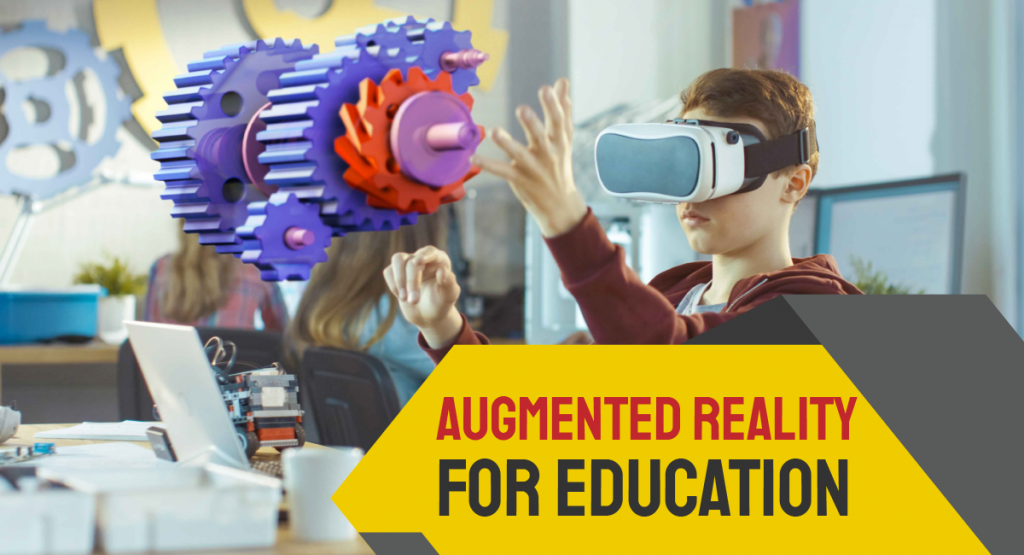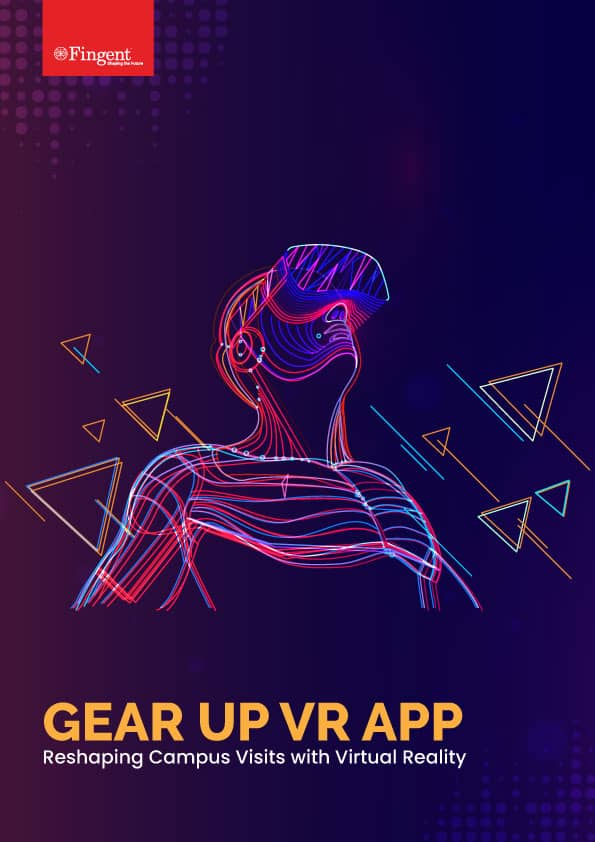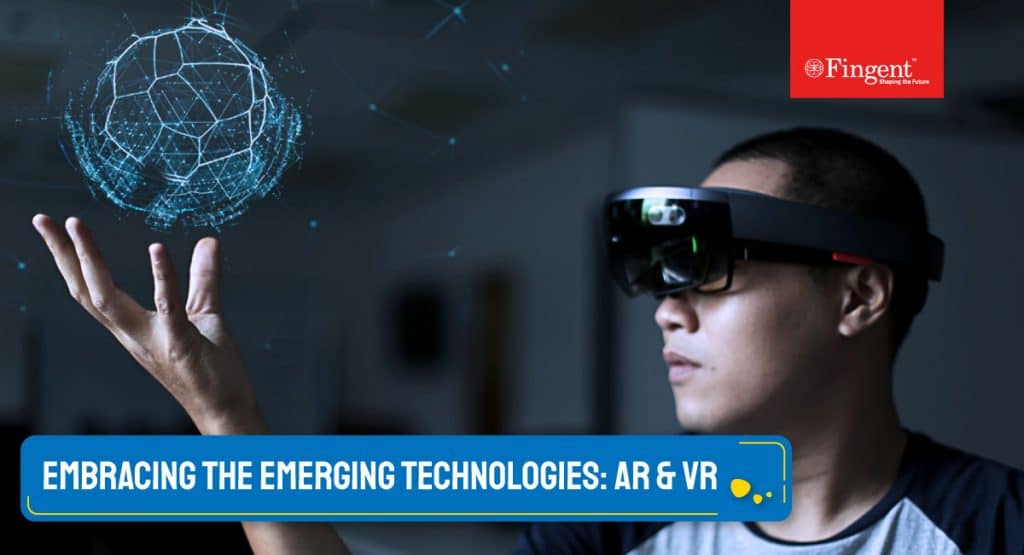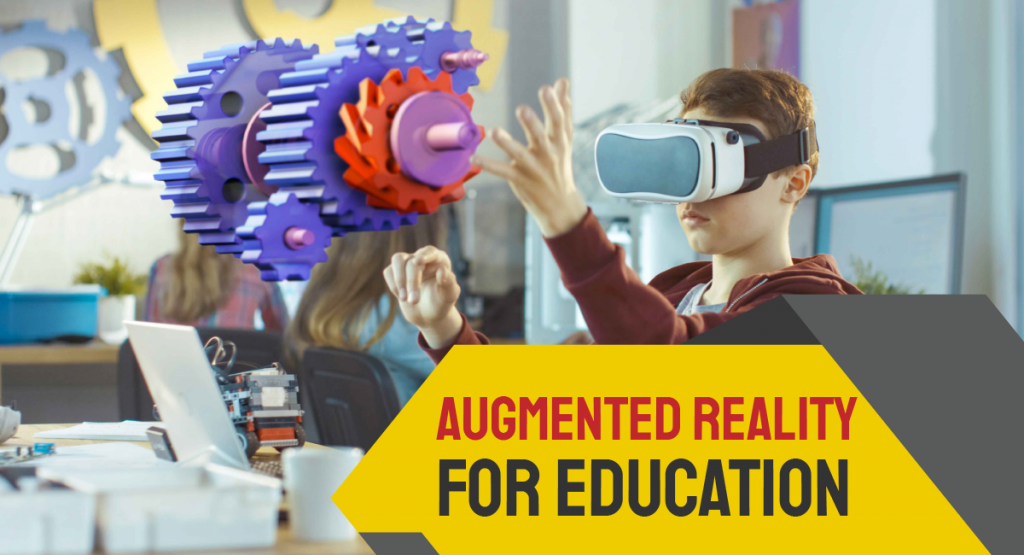Category: Education
Here’s another feather on our hat!
Fingent ranks amongst the “The Best Software Development Companies In Education – 2022” listed by the leading consumer education website, Online Degree!

This year’s focus is a huge testament to the work done by Fingent to address the most critical development issues that educators and students are currently facing in online and distance learning applications. Fingent’s digital products, learning systems, and custom software solutions for education are more intuitive and user-friendly and help drive better results with technology for educational institutions across the globe.
“With technology in the game, enabling people to quickly grasp concepts is not tough anymore, provided the right technology is implemented correctly. That’s where Fingent comes in! We make technology simple to access so that it can be leveraged to perform and provide the best!”
– Dileep Jacob, Senior Vice President – Global Operations, Fingent.
OnlineDegree.com is an educational platform founded by edtech startup veterans and academics in higher education. The site has appeared in hundreds of media outlets and publications for its work to educate working adults, academic professors, and administrators on various ways to improve the affordability and accessibility of higher education.
Ranking amongst the Best Software Development Companies in Education for 2022 is a big honor for Fingent and a step forward to many more innovations in the field of education. We believe in enabling industries to step into the future with smarter methodologies, renewed visions, and improved capabilities derived from the right technologies. Connect with us today, and learn how Fingent can help drive innovations and take your educational organization to new heights.
Stay up to date on what's new

Featured Blogs
Stay up to date on
what's new



Talk To Our Experts
Educational institutions were among the most impacted aspects of society when the coronavirus unleashed its hold on the world. Over the course of 18 months schools, colleges, and universities all around the world have faced more than their fair share of problems. No matter how difficult adapting to a completely different mode of teaching and learning is, many institutions faced the challenge head-on, pivoted, and caught up with the rapid change successfully.
In this blog, we will examine the challenges that loomed in front of the admission and college selection process and how rising technologies like VR & AI have helped tremendously in successfully dealing with these challenges.
Read more: The future of Augmented Reality in EdTech!
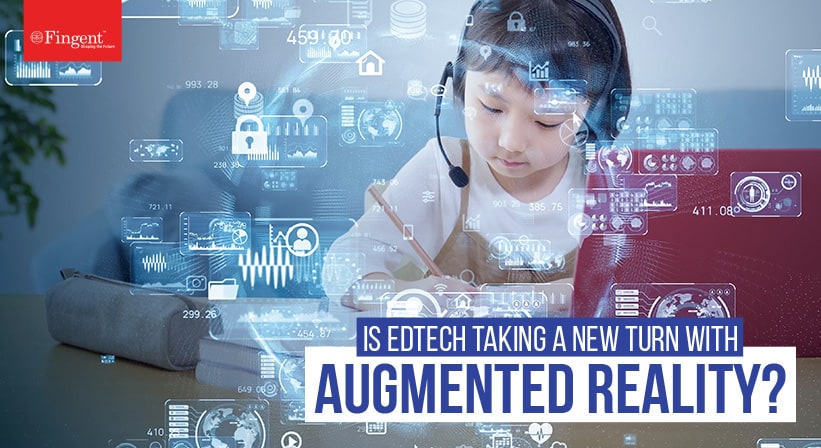
The Pandemic – A Massive Challenge for Students
Transitioning into the university lifestyle is usually a very significant part of an individual’s life brimming with feelings of anxiety, trepidation, and excitement. Adding into this already complex intersection of negative emotions, the aggressive transmission of COVID-19 has altered the higher education landscape on a colossal scale.
The pandemic created exponential threats to a student’s experience of streamlined higher education. Poor psychological outcomes, increasing levels of social anxiety, inducing feelings of lethargy, and reducing overall academic performance are predicted in the recent college students. To top it all, new applicants are facing the most difficulty deducing if a college is a good fit for them or not without ever entering the campus because of the pandemic restrictions.
Admissions and the College Selection Process During The Pandemic
The pandemic has forced universities and colleges to alter admission policies in recent years. There are constant updates in admission procedures that everyone must be aware of, whether it’s the extension of application deadlines or a change in how the admissions department will be evaluating applications.
1. New Selective Process
Many institutions dropped stereotypical testing methods and canceled extracurricular activities, and admissions counselors have changed how they examine and evaluate applications. Admission staff are encouraging potential students to showcase their caliber, personality, and passions during admission, particularly how they pursued the latter accompanied by a world plagued by COVID-19.
2. Efflux Of Applications
Since most popular universities and colleges decided not to consider SAT/ACT scores, they have faced a surge of applications creating greater diversity in the application pool. This hope is slightly misleading. Theoretically, it may seem as though the students have a good chance at admission, but this does not always translate into reality as these institutions still remain very selective.
3. Prosperity In Medium-Level Institutions
A great number of students who didn’t find acceptance in popular institutions found their hope in Medium-Level Institutions
4. Travel Restrictions
Due to travel restrictions, colleges provided online platforms for applications and even conducted interviews for admission through online mode.
Decrease In College Enrolment and Its Effects
Although universities and colleges have tried their maximum to keep admission procedures streamlined, College enrolment has seen a massive slump due to the pandemic. There is a drop of almost 1 million college students enrolling in higher education since before the pandemic began. Compared with the fall semester before the pandemic in 2019, undergraduate enrolment has dropped a total of 6.6%, representing the largest two-year decrease in more than 50 years. Thousands of students, many from low-income families were forced to delay school or drop out because of the pandemic and the economic crisis it has created.
Health and economic factors play into why hardly any students are enrolling in college during the pandemic and why people are opting for better-paying jobs instead of spending money on college. Given that cost is still the biggest obstacle, it isn’t surprising that prospective students suggest “free college” for a bigger impact on them finishing or returning to college – a very interesting insight that legislators are currently debating on.
The impact of having students not enrolling in college affects their individual earning potentials, as well as the economy of the country. Research shows that getting even a simple post-secondary education can lead to higher wages, lower unemployment, and greater lifetime earnings. Without this, fewer people graduate with the skills, credentials, and degrees required for a higher-paying job, which means unemployment for the student and a lack of a skilled workforce for the community.
Read more: Answering the top burning questions on AI implementation for businesses!

The Timely Rise Of VR & AI
“Change is inevitable and the disruption it causes often brings about new opportunities.”
Virtual Reality (VR) and Artificial intelligence (AI) are two cutting-edge technologies on the rise today. Their practicality has been proven in a number of fields and in the midst of the pandemic, these technologies grow greater.
Higher education administrative processes have started using AI to recruit, admit and enroll students. It acts as a powerful instrument in nurturing innovation and entrepreneurship in universities and it can accurately estimate demand, which means it can predict with precision how many applications to accept to achieve prime enrolment numbers.
Here are a few ways how AI helps:
- AI-backed software scores an applicant against a set of significant factors based on past applicants and builds software for higher education. This is comparatively easier and faster than admission officers assessing each and every application on their own.
- AI eliminates situations where an admissions officer might know an applicant and be biased, robotically flagging a personal connection that exists between two parties.
- AI can customize, speed up and personalize the admissions process for intercontinental students, including visa processing, housing selection, and course registration.
- AI has the latent to create interventions for students suffering from homesickness or social isolation and is thereby an important tool for student welfare, ultimately attracting more student applications.
#1. How Fingent Utilized AI-enabled Chatbots To Create Enhanced & Engaging Learning Experiences
Fingent helped the University of North Carolina develop an AI-driven ecosystem powered by IBM Watson that facilitates students to interact with an AI-enabled Teaching Assistant(AiTA). Multiple Chatbots are set up to manage a wide range of student inquiries. Also, important documents and teaching materials are uploaded with keyword and tag searches to make them easily accessible. The environment enables to create a healthy student-teacher relationship, instruct and engage students effectively, and improve students learning experiences.
Here are a few ways how VR helps:
- A VR package allows overseas students to get a sense of what the community and campus are like.
- It creates a high-quality image of the college and by using cost-effective devices like Google Cardboard, keeping costs in check becomes a less daunting task.
- With the help of VR, you can give enrolled students (who have not already seen the campus) a more profound sense of campus life and community. The idea is to charm them to make time for an in-person campus tour.
#2. More On Gear Up – Deploying VR For Campus Visits
GEAR UP is a virtual reality-based app that helps high school students experience a college campus through Virtual Reality and 360 Video. GEAR UP creates direct connections to college campuses and curates the college choice process. It empowers individual exploration and is completely free to download, making it easily accessible. It invites students to explore colleges and focuses more on first-generation students. The Introductory videos are anticipated to assist students in finding a suitable college to fit their interests and give them a sense of where they might want to attend. GERA UP is created as an initiation to help increase the number of students from low-income backgrounds who seek to obtain a secondary or post-secondary education.
Stay up to date on what's new

Featured Blogs
Stay up to date on
what's new



Talk To Our Experts
In simple terms, EdTech is the practice of leveraging IT tools and technology into the classroom to create an inclusive, more engaging, and personalized learning experience. As per industry research, EdTech is expected to reach $680.1 billion by 2027, growing annually at the rate of 17.9%.
Many EdTech companies are digitizing college and competitive learning. These companies have realized how AR acts as a value-added service and improves engagement. By 2023, Augmented Reality is expected to surpass $5.3 billion opening doors to several opportunities for educational institutions and businesses.
How AR works in education?
AR improves the real-world environment with text, sound effects, graphics, and multimedia. Simply put, it improves our immediate surroundings by layering digital content on top of the graphic representation of the real world. AR includes 25% digital reality and 75% existing reality. It means, AR does not replace your environment with the virtual but it integrates virtual objects into the real world.
Owing to the increased attention span among students and the ability to deliver varied information engagingly, teachers are vouching for the use of AR in classrooms. Going ahead, AR stands to benefit students by inducing a problem-solving attitude, delivering learning gains, providing motivation, improving cognitive skills, enhancing interaction, and enabling collaboration. This results in a positive attitude among students making the investment in AR worth it.
Let’s consider a situation wherein a history lesson, students are being taken through a module on Egypt to understand how the pyramids were built. Digital projections and visualization using AR can have a lasting impact on students that will not only help them learn these concepts but will also help them retain them and avail answers related to them, in their exams. Simply put, AR technology can provide limitless possibilities for students and teachers alike.
Read more: Impact Of Augmented Reality In Education Industry
Benefits of AR in education
Augmented Reality offers several perks in the education sector.
1. Easy access to learning materials
AR helps replace textbooks, physical forms, and printed brochures thereby reducing the cost of learning materials. Augmented Reality makes it easy for everyone to access the material from anywhere.
2. An immersive and effective learning system
Augmented Reality helps students gain knowledge through compelling visuals and immersive content. Additionally, speech technology provides students comprehensive details about a topic in a voice format thereby engaging them. Simply put, AR in education targets a major information-gathering sense in humans.
3. Encourage students and spruce up their interest
AR makes learning interesting, effortless and improves collaboration and capabilities. Additionally, it ensures the classes are less tiring by providing opportunities to implement hands-on learning approaches that can increase engagement, improve the learning experience and help students learn and practice new skills.
4. Memory
Augmented Reality helps bring lessons to life and helps students remember essential details. For example, a teacher can use AR technology to create memorable interactive uses instead of presenting photographs on a projector showcasing life in Colonial America.
5. Cost-effective
While the cost of AR equipment is often cited as a barrier to adoption, most smartphones today are equipped with the hardware needed to run AR apps. AR can lower educational costs by replacing expensive textbooks thereby making them easy to implement.
While AR offers several benefits, some common reasons cited for the slow adoption of the technology in the field of education are;
- Lack of funding
- Bulky AR equipment
- Concerns over AR educational content and its academic value
Read more: E-Learning Taking A New Front: How Can LMS Technology
Use cases of AR in education
Here are the most prominent case uses of AR in the education sector.
- Star Chart is a notable example of AR in education for astronomy students. The app highlights the constellation on the screen when students point their devices at the sky and provides them with a detailed description of the constellation. The app includes information of over 12,000 stars and 88 constellations.
- Complete anatomy is a cross-platform app developed for med students and physicians. The app provides students with over 17,000 human body structures as 3D models. Students can interact with each of them conventionally as well as by projecting body parts on a flat surface.
- The JigSpace app can be a useful AR tool for both education as well as business fields. It helps you create a project demo in a short time. The app allows you to upload 3D models, place them on slides and adjust them according to your needs before presenting them to the audience.
Ways in which AR can be incorporated in the education sector
1. Augmented classrooms
Marker-based AR apps are a popular way of incorporating AR into the conventional classroom. Students can simply scan their textbooks and the app will provide them with illustrations on complicated theoretical explanations. Students can experience first-hand the principles of a subject in a highly fun-filled and interactive way. With AR, the quality of training in critical subjects like science, maths, technology, and engineering could improve vastly.
2. Augmented homework
With AR, teachers can assign students worksheets such that they can explore educational concepts at their own pace and from the comforts of their homes. For example, if the students are unable to crack the answers given in the worksheet, they can simply scan the worksheet with an AR-based app and get pointers towards the right answer.
Dispelling common myths about AR
1. AR is too futuristic
While AR has gained rapid growth in recent years, the term was first coined 25 years ago by Boeing researcher Thomas Caudell. Though many people may not be aware of AR, it is all around us. Interestingly, we don’t need to be technically oriented to experience AR. For instance, say you are watching the live broadcast of a swimming championship. The banners you see with the winners’ names floating on the water surface are nothing but AR.
Simply put, Augmented Reality offers unlimited opportunities and it can be used in many ways to create incredible audience engagement.
2. AR is highly expensive
On the contrary, AR can be cost-efficient compared to other media solutions. Often, in this industry, low price implies low quality especially if it is custom-made. However, in most cases, it could be a one-time investment and the returns can be far higher than what you expect. AR can help achieve a higher level of crowd engagement that is not possible using traditional forms of advertising.
3. AR is difficult to use
Previously, special headsets and programs were required to use AR. However, today, it is not the case. Technology has advanced and users can experience AR by simply pointing their phone’s camera at the source material. They can experience AR with a simple click!
Watch video: Augmented Reality in Education | Transforming Learning Experience
Conclusion
With advances in mobile technologies and hardware, Augmented Reality is becoming a more accessible and widely used technology. As it can be seen, AR has huge potential in the education sector and it is the right time to invest in it.
To get the most out of AR and a comprehensive strategy for your education business, feel free to contact us.
Stay up to date on what's new

Featured Blogs
Stay up to date on
what's new



Talk To Our Experts
According to a study by Autism Speak and the CDC, 1 in 59 children in the U.S has autism. While children and adults with autism have verbal, behavioral, and social skills challenges, they also have unique identities and preferences like anyone else. Some people with autism who are minimally verbal or non-verbal use iPad and voice apps to speak for them. Also, they use iPads as an educational tool every day. Tech like the iPad has led both parents and the autism support team to embrace virtual reality. Today, more and more counselors, therapists, teachers, and parents are leveraging Virtual Reality as a therapy tool to help autistic people to communicate and connect with the world around them better. For example, the Center for BrainHealth and the Child Study Center at Yale University’s School of Medicine used VR to help young adults with autism achieve economic and social independence.
Additionally, the technology is helping non-autistic people clear some misconceptions about autism and understand the reality of living with the condition.
While VR has been gaining attention recently, it was used for therapy as early as 1996. The studies in the 90s were promising, but VR was expensive, and headsets were bulky and uncomfortable, which was a major hurdle for people with sensory disorders. All these issues prevented VR therapies from becoming a viable option for people with autism.
Today, VR technology is not just cheap and accessible. The VR headsets are lighter and more comfortable too. So, researchers are studying the potential of Virtual Reality as a treatment tool for autism more than ever before.
Read more: How Virtual Reality Improves the Standards of Medical Education and Training
Uses of VR in Autism Care
1. VR Apps
At the University of Haifa, researchers have created a VR app that trains kids to cross a road safely. This app simulates what it would be like to cross the road with cars and traffic lights. The interesting part of the app is that it allows kids to practice crossing the street without the real-world consequence of being hit by a car. Kids can practice each step as long they need and reduce the risk while learning a new skill.
Floreo is a VR learning and social skills app that therapists, parents, schools can use and support staff to help kids with autism. This app helps children learn social skills like reciprocity and planning for unexpected situations through social stories. It also helps them detach emotionally with interactive virtual sensory tools. The app can be installed on a smartphone or tablet with a Google Cardboard headset. It comes with a good data capture system making it easier to track individual goals.
2. VR Games
Teachers recommend that parents play games with autistic kids to help them learn to mimic skills like sharing and back and forth communication. Generally, autistic people can find it difficult to make eye contact or have a two-way conversation between people. This struggle can unintentionally push others away. VR games such as Playground, Astropolis, and non-VR software such as SketchUp use the VR motivator as both play and learning opportunities.
- Astropolis puts players in a spaceship to fly, using resources to ensure space colonies are happy and functioning. Players can collect and manage the resources and defend the colony as well.
- Maritime Defender is yet another mini-game they can practice letting pilots through a wormhole or not allowing them to pass through. This helps with decision-making and control-based skills.
- Stellar Prospector and Starjack improve perception and thinking, and autistic people are encouraged to play this game.
- Sketchup, a 3D architectural and designing software, helps draft objects and structures. It gives autistic kids and adults a creative outlet not found in any school setting.
Other VR games such as Vivecraft, Tilt Brush, and Medium also help build things in 3-D and 360-degrees without the real-world challenges like running out of supplies or messing up, or having to start fresh. These games do not get autistic people direct jobs in coding, architecture, art, and design, but ignite their passion and encourage them to pursue a career in those fields.
3. Tackling Phobias
Virtual reality can tackle phobias in autistic kids, such as fear of classrooms, balloons, animals, and public transport. Cognitive Behavioural Therapy(CBT), along with visualization and imagination, can combat the effects of these phobias.
Using VR, participants enter a “Blue Room” and navigate through a 360-degrees video projection of a scene usually accompanied by audio that replicates the object or experience they fear. Here the participants do not have to wear goggles as the therapist manipulates the scene using iPad controls. Also, the therapist uses CBT techniques to calm the participants when exposed to their phobias.
Read more: Top AR & VR Trends to Transform Ecommerce in 2022!
Conclusion
The VR technology enables therapists, medical professionals, and parents to leverage it to help people with autism learn differently and improve their communication skills.
At Fingent, we have the expertise to create apps, games, and software that can help autistic people connect and communicate with people around them. For more information, reach out to our team.
Stay up to date on what's new

Featured Blogs
Stay up to date on
what's new



Talk To Our Experts
Top 5 Misconceptions about AR and VR in eLearning
In this tech-savvy era, computer-based realities are a new way to perceive a surrounding. Two of the most trending reality technologies are Augmented Reality (AR) and Virtual Reality (VR). Over the last few years, AR and VR have taken strides to become the most prominent consumer technologies. With developments in technology and broader accessibility, we started to discover more ways AR and VR can benefit various industries such as entertainment, automotive, transportation, oil & gas, aircraft, etc. AR and VR have helped many industries since their onset. Both technologies have a massive potential in immersive learning. The COVID-19 pandemic forced physical classrooms to go virtual globally. Since then, the education sector is witnessing the extensive application of reality technologies such as AR and VR to promote immersive learning.
Read more: How Virtual Reality Improves the Standards of Medical Education and Training
What is immersive learning?
Immersive learning refers to a learning strategy – a future training method – that uses an artificial or simulated environment that puts learners in a highly interactive learning environment. Augmented and virtual reality technologies play a crucial role in today’s immersive learning scenario by offering a new way of using an eLearning screen.
Role of AR and VR in eLearning
Augmented Reality or AR is an interactive experience that enhances or augments real-world objects and projects computer-generated images and animations into it – like Snapchat lenses, Pokémon Go (game), and so on. It overlays or adds digital elements or imagery –in the form of text, graphics, audio, and other visual extensions – to a live view. On the other hand, Virtual Reality or VR is a ‘computer generated’ experience created inside a simulated environment. It immerses the user in a replicated/imagined world using a head-mounted device (HMD), shutting down the physical world. With the help of special manipulators, users gain the potential of intuitive and multifunctional interaction with virtual elements in VR.
Read more: Top 7 Ways AR and VR Can Impact Employee Safety Training
Both the technologies create new and interactive experiences for users through their immersive environment and accessibility in 3-dimension. Especially in the eLearning industry – which is all about using advanced technologies to enhance the learning experience – the alternate reality technologies AR and VR have been warmly accepted by modern learners because of the diverse benefits they offer. Few benefits include:
- Makes the learning more engaging and exciting
- Better online training mock-ups
- Makes learning a practical experience
- Customizes learning paths in courses
- Provides visual feedback in assessments with advanced learning analytics
Though AR and VR are trending immersive learning strategies, they are new in the Learning and Development space, and therefore, several myths are revolving around the topic. This blog will debunk five common AR and VR myths in eLearning.
Myth #1: AR and VR are the same
Many people believe that AR and VR are the same and can be used interchangeably. People often get confused between these two computer-based realities. Though both AR and VR play a massive role in immersive learning, the fact is that both these technologies have two entirely different concepts. Virtual Reality (VR) entails a complete immersion experience that displays a virtual environment to a person that blocks out the physical world by using a virtual opaque headset. At the same time, Augmented Reality (AR) adds digital elements or animations to the user’s real world using the camera on a smartphone.
Myth #2: AR and VR based apps are difficult to use
Even with an increasing number of users worldwide, some organizations still believe that AR/VR apps are more difficult to use than any other apps. This doesn’t seem right because such applications mainly meant for learning use high-end technology, making them more user-friendly. Skilled augmented/virtual reality developers ensure that the user interface is simply leading to the applications’ success perspective.
Read more: Accelerating AR/VR Adoption Among Customers
Myth #3: AR and VR are very expensive
Many organizations consider other training methods, as they believe learning through AR and VR is too expensive. When used right, AR and VR techniques can reduce costs and provide organizations with a high ROI in the long run. Many believe that VR apps can only be used with expensive gears and headsets. There are many affordable options and multiple authoring tools that businesses can consider to make AR and VR learning easy at a relatively low cost.
Myth #4: AR and VR are mainly for gaming and entertainment purposes
Because of the popularity gained by AR and VR with its practical use in the entertainment and gaming industry, people tend to think that AR and VR are primarily focused on these industries for entertainment purposes. But the fact is that AR and VR are not just limited to games. Though gaming and entertainment are the most prominent applications for computer-based realities, many industries embrace AR and VR in their marketing and advertising efforts, with widespread success.
Usage of AR/VR is trending in diverse sectors such as Manufacturing, Education, Event Management, Tourism, Automotive, Real Estate, Healthcare, Retail and E-commerce, Media and Entertainment, Defense and Military, and more. For instance, a global leader in medical imaging solutions, AccuVein uses AR to project an image of veins over skin for all medical imaging purposes.
Read more: Impact Of Augmented Reality In Education Industry
Myth #5: AR and VR may not stay for long
Many people say that AR and VR are just fads. The truth is that, as AR and VR offer many innovative ways to interact with the data around us and visualize it, reality technologies are expected to enrich users in the future years too.
Research & Markets reports that the global AR and VR market is projected to reach $1,274.4 billion in 2030, rising from $37.0 billion in 2019, and is predicted to progress at a robust CAGR of 42.9% during the forecast period (2020-2030). Key factors leading to the AR and VR market’s growth include the rising penetration of smartphones and tablet computers, increasing technology adoption among enterprises, and vendors’ surging focus on price reduction.
AR and VR lead among the emerging technologies and are being updated continuously. AR/VR development is a highly appreciated career today.
So, AR and VR are not fads and are going to stay for a long time.
Misconceptions are lifted for about every potential revolutionary technology, just like myths about AR and VR are prevalent in the mainstream now. AR and VR are emerging as crucial reality tech in 2021. Especially during this COVID-19 pandemic, which has turned our lives upside down, organizations need innovative eLearning techniques now more than ever. These computer-based realities can help enhance the learning experience more safely, engagingly, and productively.
Watch Video: How AR can be a powerful learning tool in the future
Fingent’s AR/ VR development team allows you to leverage the power of immersive learning with AR and VR and enjoy the experience! Contact us to know more.
Stay up to date on what's new

Featured Blogs
Stay up to date on
what's new



Talk To Our Experts
How Technology is Transforming Classroom Learning
There’s no denying that technology has completely transformed the way we live and steadily it is becoming more and more predominant in the classroom as well. From improving the communication between teachers and students to enhancing presentations and lessons, to organizing curriculum calendars, there is no limit to the ways to use technology in classrooms to set up a successful life for students outside of school.
Today, many educational institutions are offering courses that no longer need students to study in a traditional classroom. 92% of teachers said that the internet has a significant impact on a student’s ability to access resources, content, and materials, according to the Pew Research Center.
Benefits of using technology in the classroom
Here are a few advantages of using technology in classrooms.
1. Improves collaboration
Many technology-based tasks involve aspects that require students to seek help from their friends or teachers. Teachers have observed that when students are assigned to tasks, the students who are more technologically advanced assist those who are not.
2. Incorporates different learning styles
Each child is different and it can be challenging to adjust a study plan to fit every student in the classroom. Thanks to technology in education, it is possible to modify the lessons. For instance, kids who might want to draw during the class can create an infographic to demonstrate their capabilities and understanding of the concept which a teacher might not have previously seen or assessed.
3. Creates an engaging environment
While most people consider technology to be just a distraction, it is not so. When used correctly, it can help encourage active participation in the classroom. Using laptops, computers, tablets, etc., in the classroom can help bring more interaction and fun into learning, thus making lessons more interesting.
Read more: Impact Of Augmented Reality In Education Industry
4. Students learn essential skills
Using technology in classrooms, students can gain the knowledge and skills essential for problem-solving, critical thinking, collaborating with others, and improving motivation and productivity. Technology can also help develop several practical skills such as creating presentations, writing emails, learning proper online etiquette, and understanding the difference between reliable and unreliable sources on the internet. These skills are very important and prepare the students for the future.
How to use technology in the classroom?
While traditional classroom learning is still prevalent, many educational institutions are willing to embrace technology. Here are nine creative ideas to use technology in classrooms to enhance learning.
1. Schedule your online classes
Google Calendar allows you to create and share a class calendar that will keep the students informed about the class, duration, announcements, and important dates. Teachers can easily email the class calendar link to the students. This will help both the teachers as well as the students to stay organized and come prepared for each class.
2. Use virtual manipulatives
While there are manipulatives such as blocks, ten blocks, coins, and tangrams to visualize mathematical concepts, virtual manipulatives are more effective.
Virtual manipulatives help students to comprehend complex concepts. So, incorporating virtual manipulatives in classrooms is not just going to benefit the students but also appealing to hands-on-learners.
3. Digital field tours
One of the popular and cost-effective ways to use technology in classrooms is to take digital field tours. Apps such as Google Streetview allow you to virtually explore parks, forests, and even national and international landmarks from the comforts of the classroom. For instance, a virtual tour of the Grand Canyon can help students learn about the location or the subject and help them learn beyond books.
4. Use Social Media
Much of our time is spent on social media today. So integrating social media into the classroom is a great way to use technology in classrooms. For example, creating a WhatsApp or Facebook Group for a particular class allow students to post discussion topics. You can even consider developing interesting Twitter hashtags students can use to discuss lessons or ask questions.
5. Create digital content
Digital content related to what students are learning helps them display their individual creativity as well as showcase learning. Provide options like blogs, videos, eBooks, podcasts, flyers, or other digital means that will help students to express themselves.
6. Gamified learning
Make learning fun by incorporating gamified learning. Simply create a virtual scavenger hunt by giving the students a list of questions for students to search and find the correct answers. You can even consider forming groups or pairs of students to encourage teamwork and collaboration.
7. Include videos
Videos help students remember important concepts longer than reading. Teachers can record videos such as whiteboard explainers, peer presentations, classroom activities, etc., and share it with the class via Google Classroom, YouTube, or Gdrive.
Videos will help visual learners to learn at their own pace. Also, videos will help establish a better connection between teachers and students while comprehending clarity.
8. Podcasts
Motivational podcasts, interviews, and online courses can aid the teaching process in the long run.
Some examples of podcasts that teachers can include in the classroom are;
- Podcasts blogs
- Lectures from other teachers
- Researches on academic topics
Teachers can take it to the next level by asking the students to create their podcasts.
9. Multimedia lessons and presentations
By incorporating visual effects, music, videos in the presentations, they can be made more enriching for students. Teachers can consider inviting virtual guest speakers via Skype, Google Hangouts, and Facetime to engage their class during the slideshow or digital presentations. This will boost engagement with lessons.
Some of the future trends in the education industry
1. Student-centered learning
The future of education will be student-centric learning. Teachers need to adopt personalized teaching and learning practices. Flexibility in learning will result in imparting quality education to students. Flexible learning patterns will gain prominence in future classrooms.
2. Edutainment
The concept of blending learning with entertainment is opening the doors to thinking forward. Technology can be used to focus on slide shows and online videos. Technology innovations like Augmented Reality (AR) are already replacing pens and chalk pieces in the field of education and will bring about significant changes soon. A study conducted by the University of Georgia has shown that the introduction of AR makes 72% of the students more likely to participate in classes. Building such participation is a critical aspect of education.
Media learning is helping students to hone their creative skills and stay in touch with educational events that are happening across the globe. Videos, educational podcasts, simulations, and recorded audio-visual lessons are trends that transform traditional classroom learning and teaching.
3. Adaptive learning
The adaptive learning curriculum is personalized learning that allows students to work on instant feedback given by their teachers and improves student engagement.
In the future, students will be categorized and trained based on their inherent strengths and capabilities. Appropriate learning tools can be recommended to reveal students’ budding talents and bring them to the fore. The adaptive learning pattern will not only keep the fundamental interests in mind but also the individual needs of the students.
Fingent helps schools, universities, colleges, educational institutions, NGOs, and training centers to develop customized LMS platforms that come with aptitude-based smart learning tools. This makes sure that you can have a more interactive learning atmosphere. Customized LMS allows you to cultivate more transparency and communication between the instructor and the learner, which works to improve performance significantly.
Read more: E-Learning Taking A New Front: How Can LMS Technology Help
Integrating technology into the classroom allows more effective communication between the teachers and students. It empowers students to take responsibility for their learning by participating in projects and learning activities, giving feedback on lessons, and understand how to use technology in classrooms creatively and safely. Get in touch with our experts today and know how we can help you bring technology in classrooms more effectively.
Stay up to date on what's new

Featured Blogs
Stay up to date on
what's new



Talk To Our Experts
How is AI Transforming Various Industry Sectors?
From Siri to self-driving cars, Artificial Intelligence has been breaking into new realms, including industries that are late to adopt technology or that heavily rely on manual labor. Gartner predicts that by 2020, AI will produce more jobs than it displaces. By 2022, one in five workers engaged in mostly non-routine tasks will rely on AI to do a job.
The future of AI only looks bright!
According to experts, AI and the future of work will amplify human efficiency and productivity. AI may match or even surpass human intelligence and capabilities on tasks related to pattern recognition, complex decision making, sophisticated analytics, language translation, reasoning and learning, and speech recognition.
This article discusses how five major industries are benefiting from AI and its innovations.
1. Healthcare
No surprises here. AI in healthcare always comes first on the list. From doctors, surgeons, nurses to desk receptionists at clinics, Artificial Intelligence is enabling process automation across the healthcare community and ecosystem.
AI tools enable medical professionals to diagnose symptoms, identify trends, analyze data or information that would predispose a person to a particular disease.
AI-powered bots assist surgeons with heart, thoracic, and colorectal surgeries. Using bots for surgeries helps lower the risk of infection and blood loss, reduce pain, ensure higher accuracy, shorten hospital stays, and expedite recovery. Digitized health records (EHRs) help patients access their information on a shared online health portal.
Along with other technologies, Artificial Intelligence is being widely used in the ongoing fight against the COVID-19 pandemic. Remote patient monitoring using AI-powered medical equipment or devices help doctors maintain a safe distance from the patients, while offering treatment. The massive amounts of data generated every second in the field of medicine can be utilized effectively to continuously train AI systems through which these systems acquire the capabilities to generate insights that can aid medical researchers.
Read more: How Emerging Technology is Transforming the Healthcare Industry?
The future of AI in healthcare could include everything from answering the phone to interpreting radiology images, and designing therapeutic drugs.
2. Manufacturing
AI plays a key role in helping achieve better productivity, efficiency, and visibility across manufacturing operations. AI systems can transform the way organizations run their production lines, enhance human capabilities, garner real-time insights, and facilitate the design and product innovation.
Read more: Digital Transformation in Manufacturing
Following are some of the ways by which AI impacts the manufacturing sector:
- AI systems help monitor every stage of the production cycle and machine learning algorithms can be used to predict the fill rate, thereby optimizing the manufacturing processes and production planning.
- Small, lightweight “cobots” help create safer working environments. Manufacturers can adopt robotics to perform dangerous jobs, thus sparing their employees for crucial tasks, thereby avoiding occupational health hazards. Cobots are considerably less expensive and easy to program than the usual industrial robots. Soon, machine learning algorithms can improve their capabilities and help the cobots take instructions from humans and interact with them in a better way.
Read more: What Are Cobots and How Can They Benefit Industries?
- Predictive maintenance helps companies understand when machines need to be attended and serviced. Using machine learning, predictive maintenance can generate valuable data that helps prevent unplanned downtime. Sensors and advanced analytics in manufacturing equipment allow manufacturers to respond to alerts and resolve machine issues on time.
- Engineers or designers can input design goals and other parameters into generative design software (a program that generates several outputs to meet specific criteria) to explore better designs. Using machine learning, designers can learn from each iteration and understand what works and what does not.
3. Finance
According to a report by Business Insider Intelligence, about 75% of bank respondents with assets worth over $100 billion said that they are using AI technologies compared to the 46% of banks with assets less than $100 billion.
As much as $199 bn is saved for the front office and $217 bn for the middle office. AI technologies in banking can help generate over $250 billion in value. Considering the significant savings opportunities, more and more companies are implementing AI. Simply put, AI helps financial services companies mitigate risk, reduce overheads, and generate more revenue.
4. Education
Thanks to the numerous AI applications, the academic world is becoming more personalized. Today, a student can access study materials easily through computers and smart devices. AI helps automate administrative chores and minimizes the time required to complete complex tasks thereby allowing teachers to spend more time with each student.
Teachers can assess both multiple choice tests as well as written responses easily. Robots are helping create smart content such as video lectures and simulations as well as digitized textbooks that can be customized to the learning requirements. Along with the learning aids, these digitized interfaces help students of all academic ages and grades.
There is also a rising interest towards smart campus initiatives. A smart campus is a physical or digital set-up in which humans and technology- based systems come together to create and deliver automated experiences across higher education institutions.
AI is eliminating the boundaries of learning regardless of the physical locations. Today, students can learn any course from anywhere across the globe, at any time. AI-powered education helps nurture the fundamental IT skills of students and soon, there will be a wide range of highly interactive and personalized courses available online.
5. Retail
The retail and e-commerce industry has huge volumes of customer information, sales forecasting, stock and inventory to be tracked. Artificial Intelligence helps simplify data management to a large extent. For example, while searching for a product on an e-commerce application, AI recommends similar items according to your budget, color preference, purchase history, browsing data, online behavior, etc.
Cart abandonment is a common issue in the e-commerce industry which occurs when a customer adds items to their shopping cart but does not purchase them. With the help of chatbots and predictive analysts, the likelihood of cart abandonment can be reduced. Chatbots can remind your customer of the items left in their cart before they choose to navigate away.
Previously, people had to rely on the FAQ section of the website to get their questions answered. However, this included unchangeable questions and static answers and most customers were not satisfied with the answers. Today, however, it is changing. A chatbot agent can respond to questions using Natural Language Processing or NLP in a much better way and ensure that potential customers don’t abandon your website. Integrating voice search features into e-commerce applications helps offer a seamless digital customer experience.
Read more: How Will Artificial Intelligence Transform The World By 2030
Final Thoughts
Artificial Intelligence and machine learning together are promising to help transform every industry by guiding, organizing, and automating work. AI is definitely here to stay! At Fingent, we have the expertise to help businesses of all sizes including startups as well as established enterprises to gain an edge over competitors.
From suggesting products or providing basic customer service or running software tests, developing apps, and completing extensive problem-solving procedures for industries, we use AI technologies such as machine learning, natural language processing, and business rules that will provide you with optimal results. Get in touch with us to learn more.
Stay up to date on what's new

Featured Blogs
Stay up to date on
what's new



Talk To Our Experts
The Key Benefits of Adopting LMS in eLearning
Learning and training by means of various digital resources (eLearning) have been in vogue for some time. When learning is imparted through internet-based platforms like Learning Management System or LMS Technology and made available to users through electronic devices like computers, tablets, or smartphones, it offers learners the convenience to access resources any time they need. That makes eLearning even more beneficial in times of a global pandemic like COVID-19 to ensure uninterrupted learning.
Digital learning (eLearning) offers numerous benefits to both organizations as well as learners.
- For employers, it offers a time-effective and affordable mode of training employees.
- For employees, it helps in quick learning and improved productivity.
- eLearning systems can also benefit educational establishments that are looking for robust solutions for remote learning activities.
Related Reading: How Corporate Learning Management Systems Help Engage Your Employees
How Digital Learning is Becoming a Trend in the Education Industry
eLearning systems like LMS offer a reliable solution for the diverse requirements of the education industry. It can be helpful for all kinds of learning, be it in a business environment or for an educational institution. Below are some of the key advantages of eLearning that boost its importance in the education industry.
Cost-Effective
The most obvious benefit of eLearning is that it helps to save time and money. As users can learn anytime, from anywhere, and using any device, they do not have to take time out of their current schedules for learning and training. There is no need for printing materials in online education either, which adds to the cost benefits for the company.
Facilitates Better Communication
Some businesses use eLearning to educate their clients and partners as well. This helps in better customer engagement and retention, which ultimately leads to increased revenue. Moreover, as online education fosters the idea of interactive content, it motivates the learners to keep going easily. Interactive digital content also makes it easy to remember the information and apply that at work.
Offers More Convenience
Online learning is also more consistent and reliable when compared to face-to-face training sessions. Although every instructor will have a tried-and-tested method of instruction, there are still chances of errors and mistakes in the traditional approach. These can be easily eliminated with eLearning because it offers standardized training modules for everyone. The courses can also be customized easily to meet the specific needs of the company.
How LMS Boosts Productivity and Efficiency in Online Education
LMS provides you the right tools to accomplish your eLearning goals. You can easily create and manage a training program using the learning software, which can be beneficial in saving a lot of time when compared to running a training session in the meeting rooms. The LMS software also allows you to organize the eLearning schedules as per the needs of the learners. This makes LMS a cost-efficient solution for businesses.
Here are a few benefits of implementing LMS:
-
Better Resource Management
By adopting online education, your company does not have to bear the costs of travel and accommodation for employees or instructors. As online classrooms allow you to provide training to a large number of users in a go, there is no need to host multiple sessions either. As you can easily avoid those expenses, it gives you more resources to equip the LMS software with extra features and tools for enhanced functionality.
-
Scalable Education Modules
You can train and educate employees in different geographical locations with an LMS platform. The online courses can be used repeatedly as well, without having to allocate any extra funds for that. This means you can enroll new users easily and have them follow the same schedules for quick learning. The LMS software will also allow you to scale the learning modules so that you can include new lessons in that as needed.
-
Enhanced Collaboration and Administration
The learning management software will give you complete control of administration as well. This makes it easy to collaborate and communicate with trainers and users. You can create as many groups and courses in the software as required and assign different roles to learners, instructors, and supervisors easily. In addition, LMS also makes content management very simple. You can update the learning courses with intuitive and interactive content whenever applicable.
-
Managing and Sharing Information
As all the data is organized properly and stored in a structured manner, accessing the information about the courses, registrations, and user files is also very efficient with LMS. You can even customize the learning platform as per your preferences, such as adding corporate image and brand logos. Some LMS software applications also support multiple languages, which can be an added advantage for training and educating staff members overseas.
How to Choose the Right LMS Software
In order to make the most of the Learning Management System, you need to choose one that suits your needs in the best way. There is no one-size-fits-all solution here, which is why you should assess your organization’s requirements properly before choosing one.
Related Reading: 5 Tips for Choosing a Responsive Learning Management System
An LMS application can be cloud-based, open-source, commercial-grade, or installation-based. So, you need to check out all the features and functionalities in each of the options carefully to make an informed decision. Your goal should be to find an LMS software application that will allow you to create courses easily, manage users and content effectively, and report on the learning process accurately.
We recommend our clients to adopt customized Learning Management System with single-time development cost and zero license fee as the best way to get started. It retains your savings in your pocket.
Customized Learning Management System (LMS) Development
Fingent helps schools, universities, colleges, educational institutions, NGOs, and training centers to develop customized LMS platforms that come with aptitude-based smart learning tools. This makes sure that you can have a more interactive learning atmosphere. Customized LMS allows you to cultivate more transparency and communication between the instructor and the learner, which works to improve performance significantly.
Get in touch with us to find out how Fingent’s LMS software can help augment your learning process.
Stay up to date on what's new

Featured Blogs
Stay up to date on
what's new



Talk To Our Experts
How is AI poised to transform our future?
“Artificial Intelligence is the new electricity. It has the potential to transform every industry and create huge economic value”, says Chinese-English scientist and entrepreneur, Andrew Ng. The impact of artificial intelligence on our daily lives cannot be overlooked. From smartphones to ride-sharing apps, smart home devices, Google search, and Social media- there is hardly any industry or sector that is left untouched by AI.
There has been a huge surge in patenting of artificial intelligence in the last few years. PwC estimates that by 2030, AI would contribute a whopping $15.7 trillion to the global GDP. Analysis by the World Intellectual Property Organization (WIPO) states that the number of AI-related patent applications rose from 18,995 in 2013 to 55,660 in 2017. WIPO Director-General, Francis Gurry says that “We can expect a very significant number of new AI-based products, applications, and techniques that will alter our daily lives and also shape future human interaction with the machines we created”.
Industries such as healthcare, automotive, and financial services were the fastest to adopt AI.
Following are a few key domains that would be impacted most by AI in the coming years:
Related Reading: How AI Integration Helps Maximize Your Business ROI
AI will transform these areas in the coming years:
1. Transport
The general public would widely adopt self-driving vehicles. Apart from cars, self-driving vehicles would also include delivery trucks, autonomous delivery drones, and personal robots. Commutes may shift towards an on-demand approach like the Uber-style “cars as a service approach”. Commute-time would be viewed as a time to relax or just another way to work productively. People would live further away from their homes, reducing the need for parking space. This would change the face of modern cities.
However, enhanced connectivity, real-time tracking, traffic gauging, route calculations, peer-to-peer ride-sharing, and self-driving cars would be impossible without personal user data. This calls for the need to implement more stringent measures to secure the data and privacy of citizens.
2. Home/ service robots
Robots have already entered our homes in the past fifteen years. Recent advances in mechanical and AI technologies substantiate the increasing safety and reliability of using home robots. In the foreseeable future, we can expect special-purpose robots to deliver packages to our doors, clean offices and enhance security.
We are already familiar with the vacuum cleaning robot – Roomba, which has gained its place in millions of homes across the world. The AI capabilities of these kinds of robots are being increased rapidly with drastic improvements in the processing power and RAM capacity of low cost embedded processors. Low cost and safe robot arms are being used in research labs all over the world. Further advances enabled by deep learning will enable us to better interact with robots.
3. Healthcare
Healthcare is a promising domain for the use of AI technologies. AI-based applications have started gaining the trust of doctors, nurses, and patients. By revising the policies and other commercial regulations regarding the development and usage of such applications, AI can be used to improve health outcomes and quality of life for millions of people in the coming years. Patient monitoring, clinical decision support, remote patient monitoring, automated assists to perform surgeries, and healthcare management systems are some of the potential applications of AI in healthcare.
4. Education
AI has the potential to enhance education at all levels, by providing personalization at scale. While computer learning will not replace human teachers, Massive open online courses (MOOCs) will help students learn at their own pace with techniques that work for them. AI technologies such as Natural language processing, machine learning, and crowdsourcing are giving an impetus to online learning. If these technologies can be meaningfully integrated with face-to-face learning, AI will find more applications in our classrooms.
5. Entertainment
AI has already transformed this domain to a considerable extent. AI-driven entertainment is gaining huge traction and response from the masses with overwhelming enthusiasm. AI-enabled entertainment will become more interactive, personalized and engaging by 2030. However, the extent to which technology replaces or enhances sociability is debatable. More research is required to understand how to leverage these attributes of AI for the benefit of society.
Related Reading: Building Incredible Mobile Experiences by Combining AR and AI
Concerns about AI
Advances in AI have already impacted our lives. However, you may also have heard of the dire predictions regarding AI made by some of the brightest minds such as the late scientist Stephen Hawking and Elon Musk (Tesla and SpaceX chief). Pew Research Centre surveyed some 979 technology experts to find out whether advancing AI and related technology would help or harm humanity. 63% of the respondents were hopeful of a better future in 2030. Many of them said that all would go well only if the concerned authorities paid close attention to how these tools, platforms, and networks are engineered, distributed and updated.
Following were the concerns that were mentioned most often:
- Individuals would lose control over their lives due to the use of AI
- Surveillance and data systems that favor efficiency over human betterment would be dangerous.
- AI would cause millions of people to lose their jobs leading to economic and social upheaval.
- As people continue to depend on AI, their cognitive, social and survival skills would be diminished.
- Cybercrime, cyberwarfare and the possibility of essential organizations being endangered by weaponized information would open new facets of vulnerabilities.
Overcoming the concerns
Following are a few solutions to take positive advantages of AI:
- The global population should join hands and create cohesive approaches in tackling AI’s challenges.
- The development, policies, regulation, and certification of autonomous systems should undergo essential transformations to ensure that any kind of AI development would be directed towards the common good.
- Corporate and government organizations should shift their priorities towards the global advancement of humanity rather than profits and nationalism. AI advances should be aimed at human augmentation, regardless of economic class.
Nicholas Beale rightly said, “AI done right will empower.” As artificial intelligence continues to be embedded in most human endeavors, let us make broad changes for the better. Let us be more thoughtful about how these technologies are implemented constructively.
If you would like to know more about Fingent’s development and implementation approach on AI, give us a call.
Stay up to date on what's new

Featured Blogs
Stay up to date on
what's new



Talk To Our Experts
How Chat Bots Can Enhance Student Onboarding
Conversational interfaces have gone mainstream. The technology behind keeps crossing new milestones, the result of which chatbots have transformed from simple Q&A systems to intelligent personal assistants. As a result, bots found widespread application in diverse areas, most recently in education.
Although education stayed backward in terms of technology adoption, lately it took on a renewed quest to incorporate it. Educators are on the lookout for innovative ed-tech systems for efficient tutoring and students increasingly prefer personalized learning environments.
Deploying chatbots at numerous front-ends like college/university websites, internal student communication portals or even popular instant messaging platforms can help with that. Here’s how?
Chatbots bring in a personalized and engaging learning experience optimized to the learning pace of each learner, which actively drives student-centered learning at the forefront. Configuring a bot to answer student inquiries related to curriculum, courses, admissions, etc. as well as deliver learning resources on request makes way for a personal always available assistant that every student can engage with.
That’s exactly what we did, though in a different way.
Recently Fingent was approached by a client, a leading public research university based in Australia to develop an intelligent chatbot for assisting prospective and freshly enrolled candidates with onboarding and orientation, course-related information, credit scores, etc. The client wanted to streamline its entire student orientation process using a chatbot and make all related information better accessible and context-based as well as systematically tackle the ‘summer melt’ rates.
Here, we lay down a high-level abstract of this chatbot development experience powered by IBM Watson Assistant and backed by .NET Core. It briefs various facets and challenges faced during the design and development of the system.
The Plot (Objective)
“Build a chatbot to assist candidates during the orientation process of Monash University. The chatbot should be capable of handling different context-based scenarios such as listing available courses, providing credit score information, course structure, projects associated with each course and many more.“
Since it is a Proof of Concept (POC) project, and Monash University offers a wide range of courses based on various areas of education, the team decided to choose one particular area and focus on only two of the selected courses (Bachelor of Accounting & Bachelor of Actuarial Science). This is to repress the scope in control, considering the timespan and resource availability.
Foundation
Keeping in mind the idea of building a highly sophisticated chatbot, an ideal and matured chatbot assistant technology had to be finalized, which provides both comprehensive user intent identification and processing as well as a satisfactory response according to the user query. The system should also provide an extensive and less technicality included training interface. The hunt for such a tech ended up in IBM Watson Assistant.
Terminologies
The world of chatbots has some common terms which are essential key knowledge required while developing a chatbot. We can call them as the pillars of a chatbot.
- #Intent – Intent is nothing but the user’s intention in a query – basically covers all types of questions and their varieties, the user probably may ask. This can be queries within the scope or related to the scope.
Examples:
“What are all the courses available?”
– Intent associated: #KnowCourseInfo
“How much credit I require in the first semester?”
– Intent associated: #KnowCreditInfo
Remarks – There will be some stock #intent collection depending upon the chatbot engine, which is designed to handle the general greetings and conversation-oriented chunks. We can import or enable the intents as we want to make our chatbot more conversational and human-friendly.
- @Entity – An entity is a subject addressed in the user query. There are mainly two categories of entities. They are Scope-based entities and System entities. Scope-based entities are entities that belong to the scope we address whereas System entities are “primitive system-aware” entities.
Examples:
“What are all the courses available?”
– Entities associated: @Course
“How much credit I require in the 1st semester?”
– Entities associated: @Credit, @Semester, @system_number:1st
Remarks – On diving deeper, we may need the support of multiple types of scope-based entities and a system-aware way of specifying the relationship between the entities (which lacks in IBM Watson Assistant). This is to specify the entity characteristics as more descriptive as well as with the notion of “the system knows” the given attributes and relationships of an entity.
- Dialog – A dialog is a declarative way of specifying the possible questions the user may ask, and how should the bot respond to the corresponding questions. Generally, this will be a tree-based structure, rooted in the key user intentions and scope covered features. We will be handling the different scenarios of a single #intent as well as the edge cases.
- $Context Variable – A context variable is to store information, collecting from a dialog context or it can be any information related to the dialog context. It helps us to keep the dialogue context and facilitates conversational flow.
- Skill/Workspace (IBM Watson based) – A skill is a package that consists of the above-mentioned factors, in which all are aligned into a single chatbot capability, in our case, it was Onboarding skill.
Implementation
The entire development process streamlined into two major sections. The first one is aligned to the chatbot engine intelligence building and improvement activities while the other one is for the middleware and UI development.
1. Intelligence Build-up on top of IBM Watson Assistant
- Analyzed the requirements and fixed the boundaries of the scope. It includes what all are the functional areas to be covered by the proposed chatbots.
- Prepared the possible user queries and categorized them as #intents.
- Identified the underlying @entities in each question and classified them to form the actual set of primitive entities.
- Designed the dialog structure based on the prepared user query sets. See the resources: Intent structure and Dialogue flow.
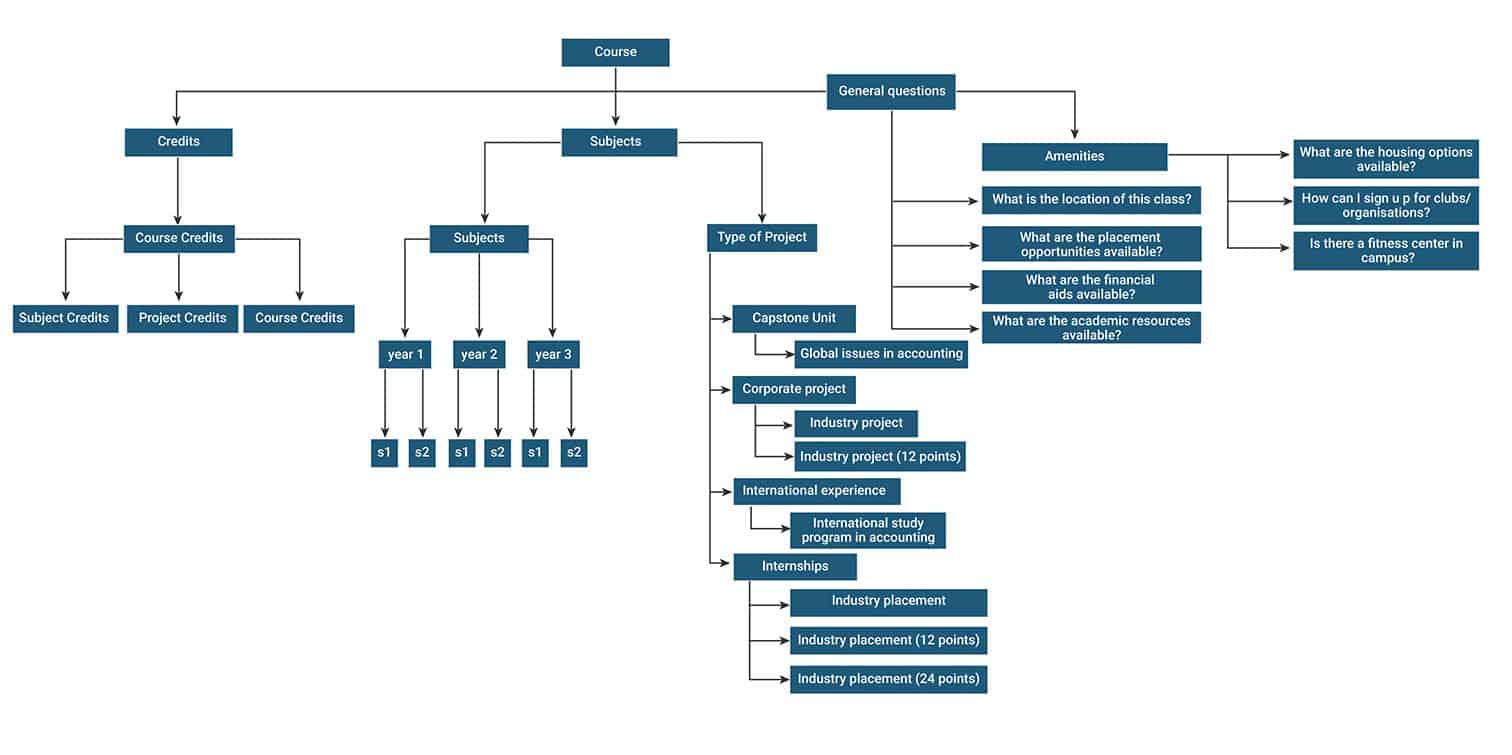
Fig 1. Intent Structure
- Continuously refined the dialogue structure based on detecting each edge cases and to incorporate new scenarios.
- Used some conventions on responses to extend the chatbot response capabilities, according to the requirements. This is to handle specific use cases such as clickable action list image response, map response, and show a list of items.
- Implemented WebHooks (IBM Watson based) to talk to external APIs to fetch the values for a dialogue node as well as validating user input (Not a comprehensive solution).
2. Middleware and UI Development
- Built a middleware backed by .NET Core with an intention to plug any chatbot service to the UI module. In fact, it is designed as a standard-framework to separate the chatbot logic from the application logic. This enables hassle-free maintenance of the app logic, code reusability, and extensibility.
- Built the UI using Angular to provide a sophisticated face for our chatbots.
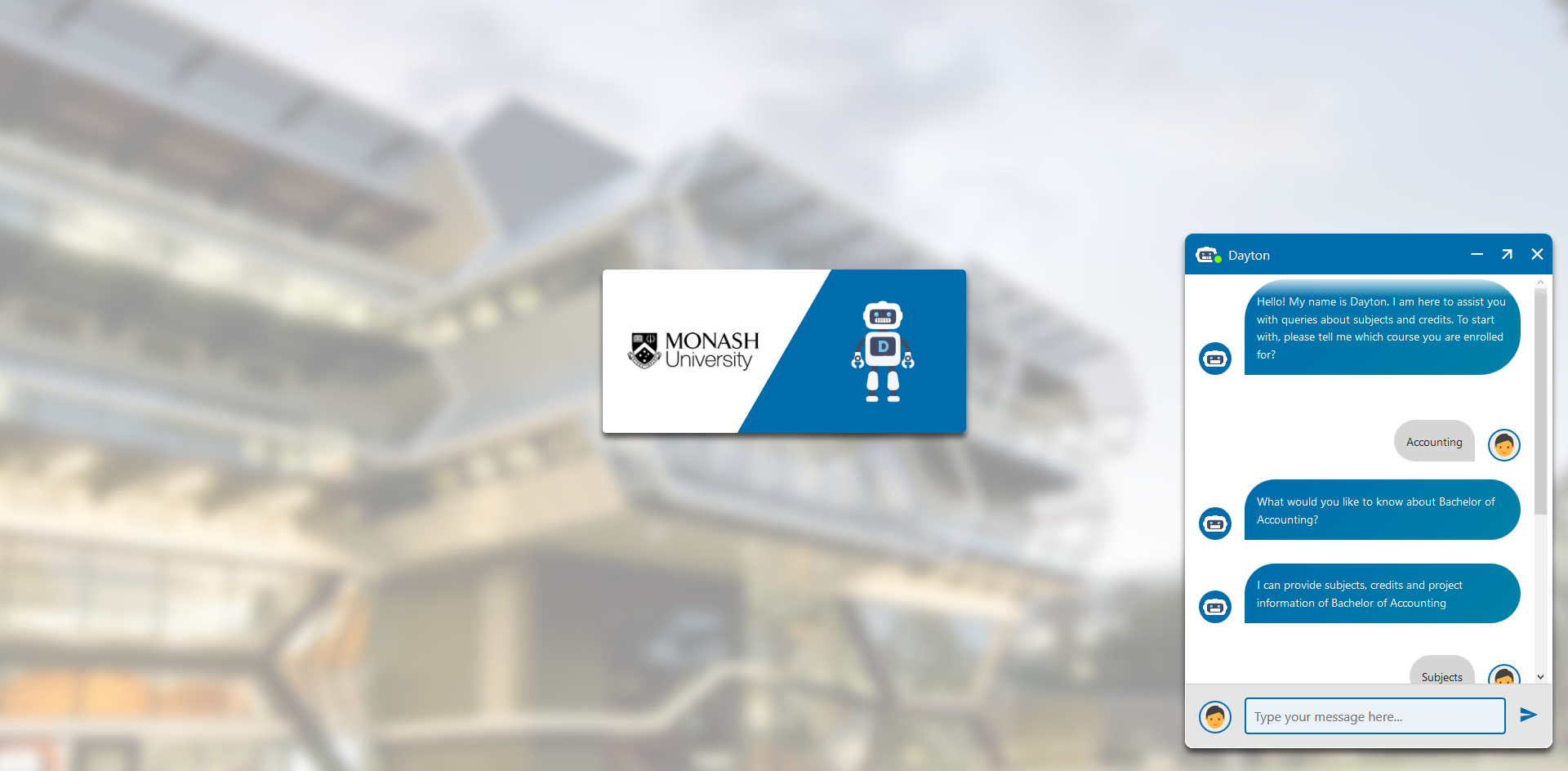
Fig 2. Dayton Interface
Also, we built a diagnostics module, as part of the UI, which provides the service configuration information and session-based transcripts of conversations held with the chatbot.
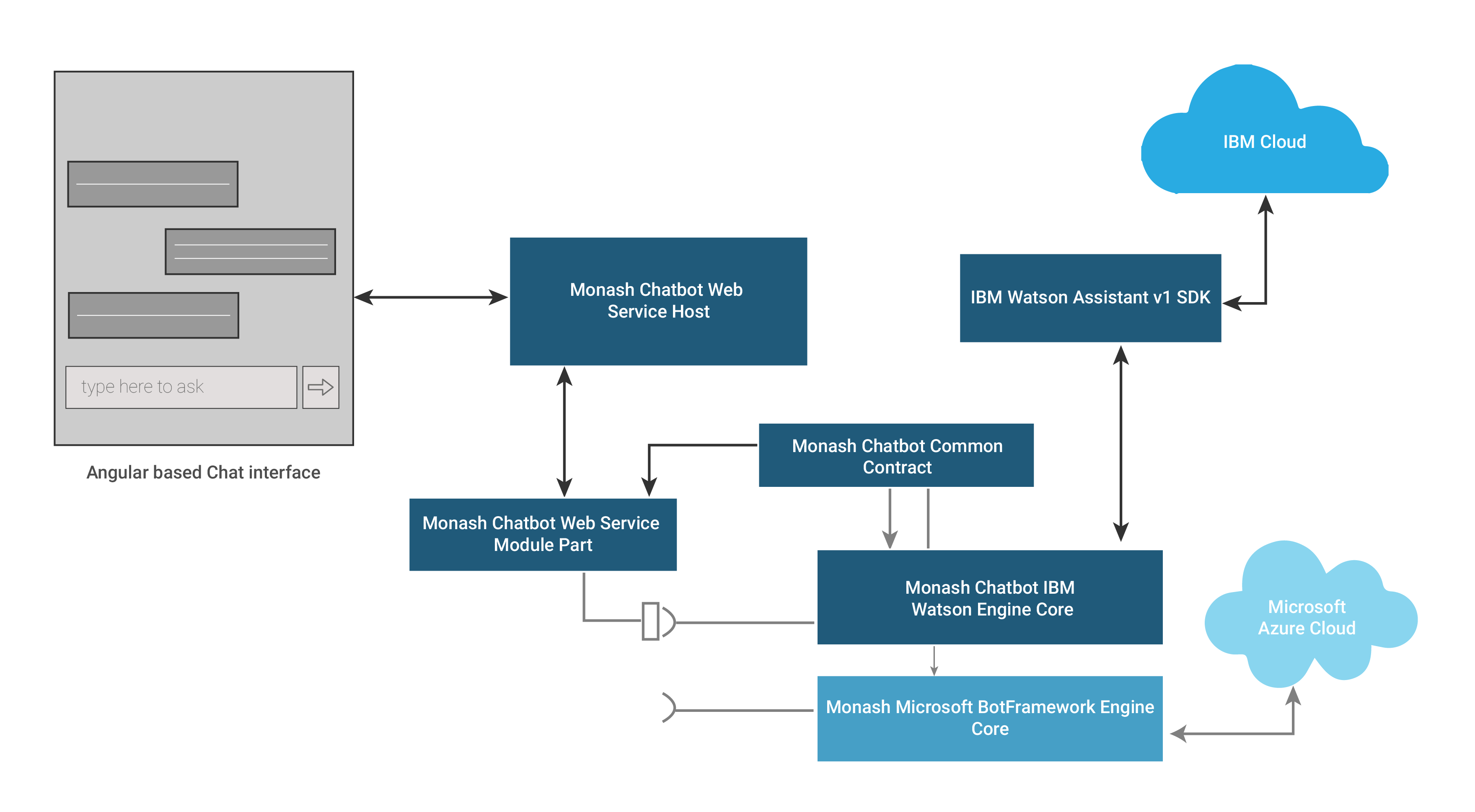
Fig 3. The architecture of the Chatbot Middleware Application, Source Code
Challenges
During the development, we came across some development challenges with IBM Watson, which are listed below.
- Unable to map relationships between entities. Due to this limitation, we were unable to link and pull the related values of the entities.
- Conflicts between various entity values (Solved partially via entity split-up method)
- API Limitations to manage chatbots dialog schema
- IBM Watson doesn’t provide active learning, the self-learning capability to learn from user conversation sessions.
- It also doesn’t provide an efficient way to talk to external APIs. Only one external API can be called, which leads to a bottle-neck on executing the webhook actions.
- No built-in user input validation. This has to be done via WebHooks.
Capitalizing on AI Chatbots Will Redefine Your Business: Here’s How
Final Words
The application is now in a showcase/UAT (User Acceptance Testing) mode, also the refinement process being in progress. It has miles to go to reach the capability to converse with the user as a comprehensive onboarding assistant.
To know how chatbots can enhance your business growth, get in touch with our experts today!
Stay up to date on what's new

Featured Blogs
Stay up to date on
what's new












